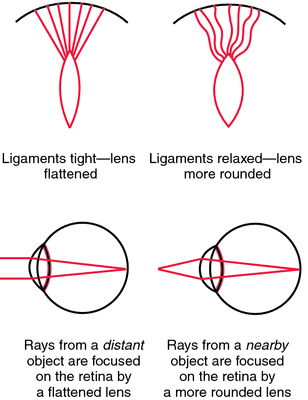The nurse is auscultating a client's chest for breath sounds. In which situation should the nurse expect to auscultate increased breath sounds?
When bronchial breath sounds are auscultated in the trachea.
When the client is experiencing excessive sneezing from a tree pollen allergy.
When the client is resting in bed and not experiencing respiratory issues.
When the bronchial tree is is obstructed by secretions.
The Correct Answer is D
A. When bronchial breath sounds are auscultated in the trachea.
Auscultating bronchial breath sounds in the trachea is a normal finding, as the trachea is close to the upper airway, and this is where bronchial sounds are normally heard. However, if these sounds are heard in the peripheral lung fields, it can indicate an abnormal condition.
B. When the client is experiencing excessive sneezing from a tree pollen allergy.
Excessive sneezing due to allergies would not typically result in increased breath sounds. Allergies may cause nasal congestion, but they don't directly lead to increased breath sounds.
C. When the client is resting in bed and not experiencing respiratory issues.
If a client is at rest and not experiencing any respiratory issues, breath sounds should typically be normal. There would be no reason to expect increased breath sounds in this scenario.
D. When the bronchial tree is obstructed by secretions.
Increased breath sounds, such as wheezing or rhonchi, can be auscultated when there is an obstruction in the bronchial tree due to secretions, narrowing of the airways, or other causes. These sounds are typically abnormal and indicate an issue with air movement through the airways.
Nursing Test Bank
Naxlex Comprehensive Predictor Exams
Related Questions
Correct Answer is B
Explanation
A. Simultaneously palpating both arteries to compare amplitude: While comparing amplitudes is important, using the diaphragm of the stethoscope to listen for bruits (abnormal whooshing sounds indicating turbulent blood flow) is a more specific and accurate method for assessing the carotid arteries for potential vascular issues.
B. Listening with the diaphragm of the stethoscope to assess for bruits: This technique allows the nurse to detect abnormal sounds (bruits) that could indicate partial blockages or stenosis in the carotid arteries, suggesting a risk of stroke or transient ischemic attack.
C. Instructing the patient to take slow deep breaths during auscultation: Deep breaths are more relevant during lung auscultation. Carotid artery assessment focuses on detecting abnormal sounds and assessing blood flow rather than respiratory patterns.
D. Palpating the artery at the base of the neck: Palpation alone does not provide enough information about potential blockages or abnormalities in the carotid arteries. Listening with a stethoscope allows for a more detailed assessment of blood flow and the presence of bruits.f the nurse hears a bruit during auscultation, they shouldnotpalpate the carotid artery. A bruit suggests partial obstruction (carotid stenosis), and compressing the artery further could worsen blood flow.
Correct Answer is A
Explanation
A. The pupils constrict when the examiner's index finger slowly moves toward the client's nose.
This statement is correct. Visual accommodation is the process by which the eye's lens changes shape to focus on objects at varying distances. When an object moves closer to the eyes, the pupils constrict to adjust and focus on the near object, preventing double vision.
B. The client involuntarily blinks in the presence of bright light directed over the pupils during the eye exam.
This statement describes the pupillary light reflex, not visual accommodation. The pupillary light reflex is the response of the pupils to light exposure.
C. The client's peripheral vision becomes sharper when the examiner shines a light over the pupils.
This statement is not accurate. Peripheral vision sharpness is not related to visual accommodation. Visual accommodation mainly involves adjusting focus for objects at varying distances.
D. The pupils dilate when the examiner's index finger slowly moves toward the client's nose.
This statement is incorrect. Pupils should constrict, not dilate, when focusing on a near object (as in visual accommodation). Dilation occurs in low-light conditions or in response to sympathetic stimulation.

Whether you are a student looking to ace your exams or a practicing nurse seeking to enhance your expertise , our nursing education contents will empower you with the confidence and competence to make a difference in the lives of patients and become a respected leader in the healthcare field.
Visit Naxlex, invest in your future and unlock endless possibilities with our unparalleled nursing education contents today
Report Wrong Answer on the Current Question
Do you disagree with the answer? If yes, what is your expected answer? Explain.
Kindly be descriptive with the issue you are facing.
